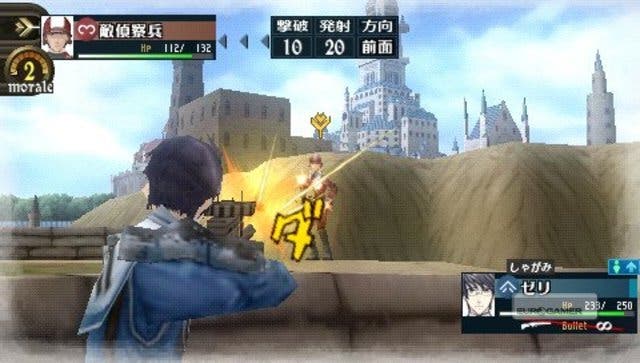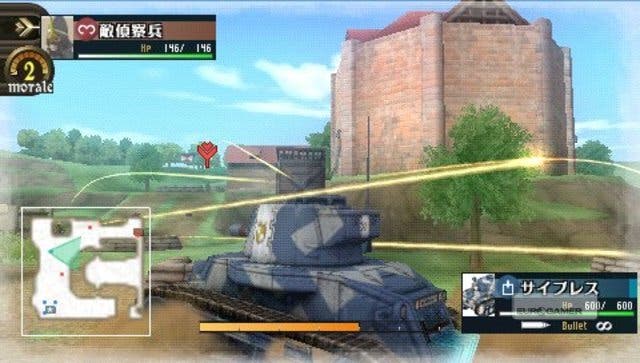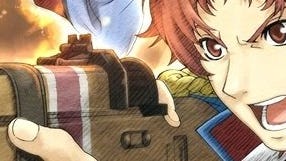Valkyria Chronicles II
Sociopolitics, tanks, strategic deployment and, er, homework.
Where the original Valkyria Chronicles had 10 units, this had 35, which means even more stat-boosting 'potentials' and battle permutations. There's also a lot more customisation. Although you could change the equipment on your beloved Edelweiss before, now there are hundreds of parts and decals for your personal tank. You can even customise it so that it becomes a people-carrier, completely changing how you use it in a fight. Especially in versus and co-op, this customisation changes the flow of battle. You're able to build your own squad, and team up with friends to try it out.
Multiplayer, naturally, was the main motivation behind the series' switch from PS3 to PSP, though it will also grant the series greater visibility. "In Japan it's very prevalent now for people to get together and play PSP games wirelessly over ad-hoc," says the game's director, Takeshi Ozawa. "The PSP is becoming ever more popular in Japan, and because people here tend to commute and travel around and spend a lot of time on trains, they carry their PSPs around with them. We think that Valkyria is the type of game you'd feel compelled to investigate if you saw someone playing it. You'd be curious about it. We hope that will bring it to a bigger audience." Valkyria Chronicles also has its own anime series in Japan, so the obvious hope is that fans familiar with the animation will be more likely to buy into the series on the PSP.

The structure of the game has also changed to fit its diminutive new home. Instead of the beautiful big storybook that warmly enveloped Valkyria Chronicles' battles and cut-scenes, you'll choose missions from a list, structured around the school year. Complete January's missions and you move the story on to the next month. The missions I played were between five and 10 minutes long, which is about right, but they were still training missions. Forty-minute epics aren't out of the question later on.
Gameplay-wise, Valkyria Chronicles II feels accomplished - my only reservations lie with the story and setting, which I didn't have enough time to get a feel for at TGS. The original game already strayed a little too far into whimsy for a war epic from time to time, and there's a danger that setting the sequel in a school might make the whole thing seem a little facetious. Motoyama is keen to reassure you, though, stressing that the Valkyria Chronicles II will retain its predecessor's political depth.

"When we thought about developing a game based on war, rather than concentrating on the military and the army as other games would, we wanted to do something different. We wanted to involve everyday people. In Japan everyone is of a similar culture and a similar race, but when you go abroad to places like Europe there are many people of different races and cultures living together - how are those relationships impacted, how do they change, when you are at war?"
SEGA's Japanese take on the war game asks and answers a lot of questions that Western ones don't tend to bother with - it's a socio-political, character-based story, obsessed with race, sexuality and interpersonal relationships rather than, well, gun models and supposed historical authenticity. The series' move to PSP clearly signals a desire for more mainstream acceptance, but it doesn't appear to be compromising the original's critically-acclaimed vision.


